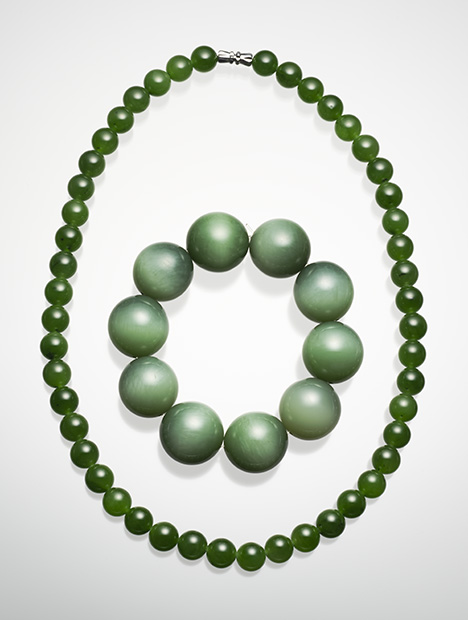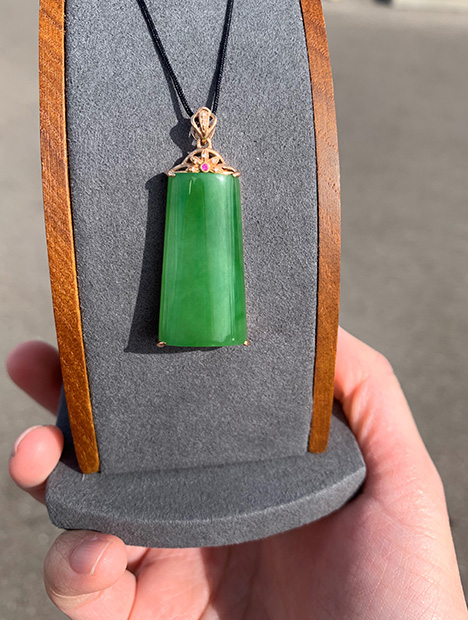Nephrite Jade from Multiple Sources

Green nephrite deposits are found at many locations around the globe, with British Columbia, Siberia, and northwestern China as the leading producers. Old and still active subduction zones with ophiolite have the potential to produce green nephrite. This is because green nephrite bodies are closely associated with their serpentinite host rocks, part of the ophiolite exposed on land when an ocean basin closes. All major green nephrite deposits cluster in this type of convergent-margin environment.
At the 2020 GJX show, Nikki Makepeace from Jade West in British Columbia showed the authors nephrite pieces from Pakistan, an emerging green nephrite source. The green to dark green appearance and the quality of these pieces (such as the bead strand in figure 1) are very similar to the production from British Columbia. In comparison, green nephrite from Siberia shows brighter colors (the bracelet in figure 1 and the pendant in figure 2). Ms. Makepeace informed the authors that the production from Pakistan is quite substantial.

The earliest report on Pakistan nephrite was published in 1963, with the positive identification of two pebbles collected in 1955 in the riverbed of the Teri Toi in Kohat District of Pakistan (B.C.M. Butler, “Nephrite jade in West Pakistan,” The Journal of the Royal Asiatic Society of Great Britain and Ireland, No. 3/4, 1963, pp. 130–139). The geographical location of this deposit placed it in the collision belt along the Himalaya Mountains. This is the convergent margin between the Eurasian and Indian Plate when the Tethys Ocean closed about 50 million years ago, providing an ideal geological environment for nephrite formation.
In addition to the goods from Pakistan, the authors saw a large koru, a spiral shape often used in Maori art, made of nephrite from Afghanistan. Currently, Afghani materials are scarce on the international market. The only information the authors could find was that the rough comes from the Kohi-Safi District of central Parwan Province. This location is not far from the Pakistani deposit.
While buyers are still waiting to see more production from these emerging sources, green nephrite from British Columbia and Siberia still dominate the market. Siberian goods in general demand higher prices than materials from the rest of the world due to their brighter colors. British Columbian production is still high and can supply finished goods of all price ranges.



